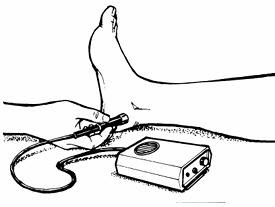Posted by Admin
in Friday, October 2, 2009

The present healthcare environment, with high patient acuities and complex medical management, presents a challenge for nurse educators to insure initial and continuing competence of staff nurses. Simulation is an acceptable method of providing education and evaluating competence. This method of education facilitates learning through enactment and imitation of a condition or situation utilizing technology (Ravert, 2002).
Simulations are available in many formats, including human models and computer programs with multimedia features and audio capabilit

y.
Simulations allow the adult learner to be self-paced, receive immediate feedback, develop critical think skills, and provides for knowledge reinforcement and just-in time learning (Ravert, 2002). Simulator training is theoretically superior to conventional training as it allows unlimited practice in a safe environment. Training in clinical skills are developed in addition to competency in crisis management behaviors such as leadership and communication skills (Wong, Ng & Chen, 2002).
The acquisition of a clinical simulation lab requires a team approach. The team should consist of nurse educators, nurse managers, an experience nurse clinician knowledgeable in nursing informatics and information technology support staff. The first major step is an assessment of the education department's current state and future needs including financial support (Drury, 2002).
The specific areas of assessment include:
1. The current use of technology as a teaching strategy and the knowledge base of nurse educators
2. Instructor preparedness towards further computerization
3. Current and future needs of staff nurses in relation to high risk, low volume, problem-prone clinical activities
4. Review of other clinical simulations labs to evaluate composition and gather information related to overall implementation
5. Vendor review and evaluation of identified equipment
6. Review of institutional infrastructure, including human resources, to support the acquisition of new technology
7. Potential limitations related to internal financial support
8. Identification and evaluation of possible external sources of funding, including vendor support and grant acquisition.
Following a careful assessment, which may require up to six months, the team must develop a proposal with clearly defined goals and objectives. The proposal must be designed to provide both long-term planning for the development of the clinical simulation lab and strategies to facilitate a successful change process. A critical phase of the change process is the development of the nurse educators' competency level in utilizing the simulation equipment, which also helps to foster the acceptance of the lab project as a whole.
Competency development can be accomplished externally, through education sessions at an established clinical simulation lab or internally by vendor supported demonstration days. Demonstration days at the home institution may be more appropriate as it allows for the ease of accessibility to all staff involved in the process. The demonstration days must be carefully planned to maximize the availability of all nurse educators, technology support staff and nursing leaders. Demonstration days can be held two to three days per month for up to six months prior to full implementation of the clinical simulation lab (Drury,2002).
Further recommendations to be documented in the proposal include size of simulation lab, actual technology to be purchased and timeline for lab development. Considerations must be given to the development of policies and procedures related to safe operations and protection of property, immediate and on-going maintenance including responsibilities for the appropriate functioning of the lab's technology (Drury, 2002).
Financial requirements including rationale must be identified in detail, this helps to facilitate grant funding as appropriate. Grant funding can often be secured for isolated pieces of equipment or for the initial lab acquisition. The lab budget must include initial acquisition of equipment as well as human and material resources, on-going maintenance and technology updates. Cost is often the deterrent in the development of clinical simulation labs, as such the professional staff must construct quality education outcome measures that adequately satisfy a return on investment. The goal is to improve psychomotor skill and knowledge acquisition utilizing computer based simulation. Experience is easily translated into learning during the process of a well conducted simulation training (Ravert, 2002, Wong et al., 2002)
Full development of a clinical simulation lab can take from eighteen months to two years
The author would like to thank Debra Spunt, RN, MSN for hosting a visit to the clinical simulation lab at the University of Maryland, Baltimore, Maryland. It provided inspiration for evaluating the possibilities of a lab.
References
Dury, M. R. Considerations in planning a computer learning lab for nursing students. http://cac.psu.edu on 11/3/2002




